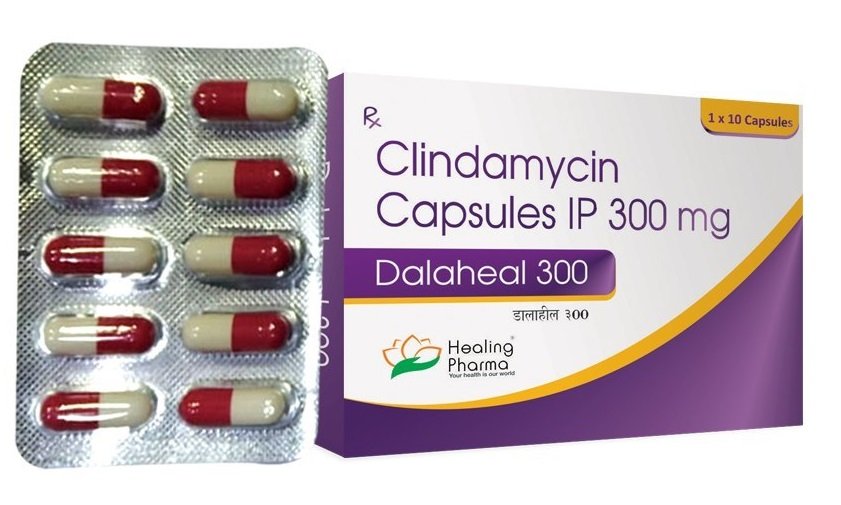
In the realm of antibiotics, clindamycin stands as a potent agent combating a spectrum of bacterial infections. Its efficacy, coupled with a broad range of applications, renders it indispensable in modern medicine. From acne to life-threatening infections, this drug continues to serve as a cornerstone in the treatment arsenal of healthcare professionals worldwide. In this article, we delve into the intricacies of clindamycin, exploring its mechanism of action, therapeutic uses, potential side effects, and future prospects.
Understanding Clindamycin:
Clindamycin, derived from lincomycin, belongs to the lincosamide class of antibiotics. This semi-synthetic compound exerts its bacteriostatic effect by binding to the 50S subunit of the bacterial ribosome, thereby inhibiting protein synthesis. By disrupting bacterial growth and reproduction, clindamycin effectively combats various Gram-positive and anaerobic bacteria.
Therapeutic Applications:
- Skin and Soft Tissue Infections: Clindamycin finds extensive use in treating skin and soft tissue infections caused by Staphylococcus aureus, Streptococcus pyogenes, and anaerobic bacteria. Its ability to penetrate deep tissues makes it particularly effective against abscesses and cellulitis.
- Respiratory Tract Infections: In respiratory infections, especially those caused by anaerobic bacteria like Bacteroides fragilis, Clindamycin serves as a valuable alternative, especially in patients allergic to penicillin.
- Bone and Joint Infections: Clindamycin plays a crucial role in the management of osteomyelitis and septic arthritis, particularly when anaerobic organisms are implicated.
- Pelvic Inflammatory Disease (PID): When combined with other antibiotics, clindamycin forms part of the treatment regimen for PID, effectively targeting the polymicrobial nature of the infection.
- Acne Vulgaris: Topical clindamycin, often in combination with benzoyl peroxide, serves as a frontline therapy for acne vulgaris, exerting its anti-inflammatory and antibacterial effects on Propionibacterium acnes.
- Malaria: In regions where resistance to conventional antimalarial drugs is prevalent, clindamycin, in combination with quinine or artesunate, offers an alternative treatment option.
Potential Side Effects:
While generally well-tolerated, clindamycin is not devoid of side effects, ranging from mild gastrointestinal disturbances to severe colitis. Common adverse effects include:
- Gastrointestinal Upset: Nausea, vomiting, and diarrhea are among the most frequently reported side effects. These symptoms usually resolve upon discontinuation of the drug.
- Pseudomembranous Colitis: Clindamycin’s broad-spectrum activity can disrupt the normal flora of the gut, predisposing patients to Clostridium difficile infection and subsequent colitis. Symptoms include severe diarrhea, abdominal cramping, and fever, necessitating prompt medical intervention.
- Hypersensitivity Reactions: Allergic reactions, ranging from rash and itching to anaphylaxis, although rare, can occur following clindamycin administration.
- Hepatotoxicity: Elevated liver enzymes and hepatocellular damage have been reported in some patients receiving clindamycin therapy.
- Local Reactions: With topical use, irritation, dryness, and erythema at the application site may occur.
Special Considerations:
- Pregnancy and Lactation: While clindamycin is generally considered safe during pregnancy and lactation, its use should be weighed against the potential risks, especially in the first trimester.
- Pediatric Population: Clindamycin is commonly used in children for various infections; however, appropriate dosage adjustments based on weight and age are necessary to prevent adverse effects.
- Renal and Hepatic Impairment: In patients with renal or hepatic insufficiency, dosage adjustments may be required to prevent drug accumulation and toxicity.
Future Perspectives:
The ongoing evolution of antibiotic resistance poses a significant challenge to the efficacy of clindamycin and other antimicrobial agents. Consequently, research efforts are focused on novel drug formulations, combination therapies, and alternative treatment strategies to circumvent resistance mechanisms and prolong the clinical utility of clindamycin.
Moreover, the exploration of adjuvant therapies, such as probiotics, to mitigate the risk of antibiotic-associated diarrhea and colitis holds promise in enhancing the safety profile of clindamycin.
Conclusion:
In conclusion, clindamycin stands as a cornerstone in the management of various bacterial infections, offering a broad spectrum of activity and proven efficacy. Despite its favorable therapeutic profile, vigilance is warranted regarding potential adverse effects, particularly pseudomembranous colitis. With ongoing research endeavors aimed at addressing antibiotic resistance and optimizing therapeutic outcomes, clindamycin continues to occupy a pivotal role in modern medicine’s armamentarium against infectious diseases.
